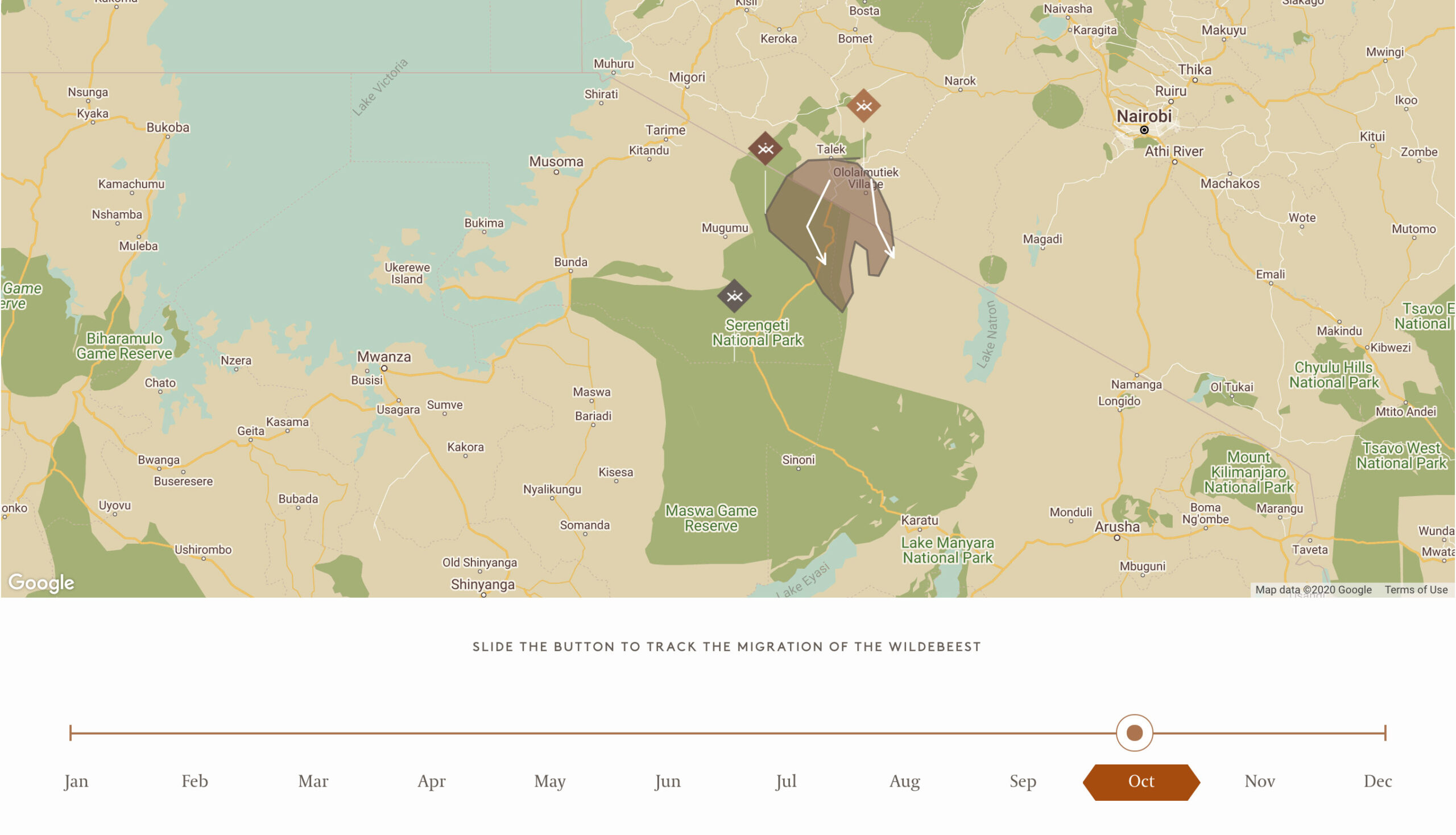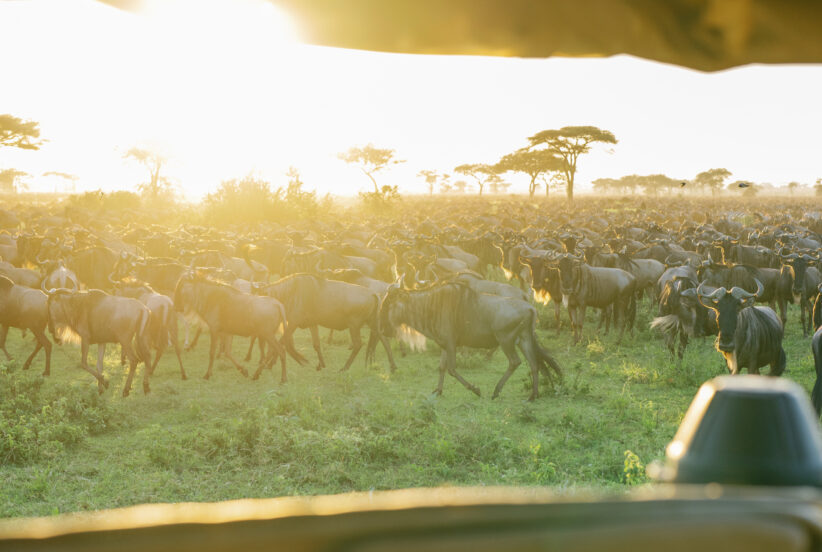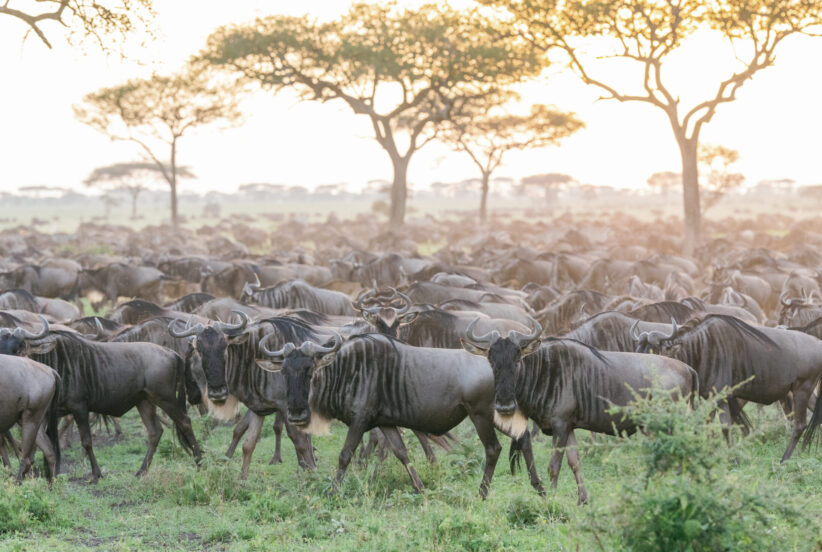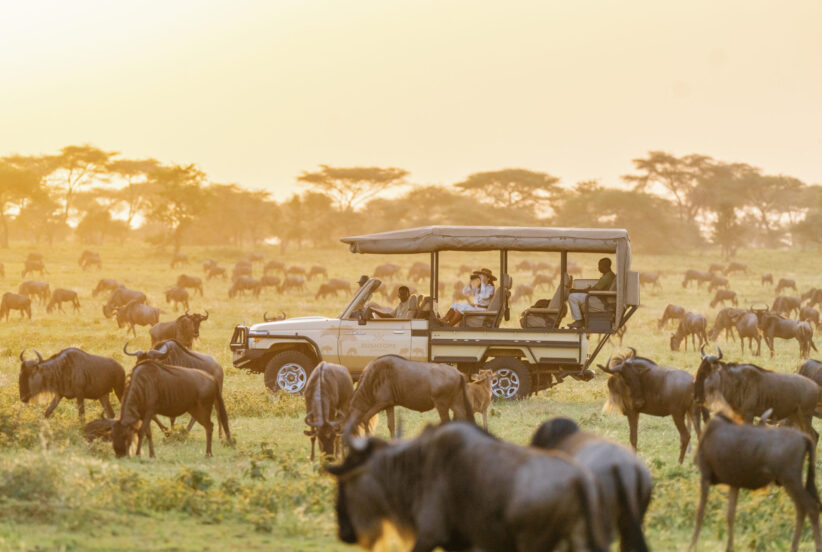Where? When? Tracking the wildebeest migration with Bushtops
These are the two biggest questions we are asked, every year. When is the best time to visit Bushtops? And where will the migrating wildebeest be, month by month?
If you know Africa (or read our reports) you’ll know that nothing is ever certain and everything can change. Migrations follow a broad clockwise pattern, but rainfall and grass determine the variable course. Human insights and constant tracking help us anticipate movements, but we have precisely no control over what the behemoths will do next.

However, whilst we cannot anticipate future herbivore movements, we can assess current positions. Below you will find a real Bushtops innovation: our first-ever interactive ‘WOW’ (Where’s Our Wildebeest) map. It shows the herds’ current locations and their likely (though never guaranteed!) direction of travel. The WOW map is now a permanent part of our website, with regular updates showing us and our guests the most recent migratory progress. You can find the fully interactive version here.

Right now, the herds are doing what we had hoped and expected, gathering in the Mara and northern Serengeti to feast on green grass shoots before moving south. That means glorious viewings for guests at Mara Bushtops and Serengeti Bushtops alike, with spectacular river crossings creating unbeatable safari memories.
In the Serengeti we have seen crossings from point Nr. 1 to 4. The herds have been crossing in small groups and proceeded into the woodlands to continue towards the south. In the Mara, the herds are scattered and mostly found in the southern part around Keekorok, Sopa hills and the plains along the Talek/Keekorok road. The herds in the Mara triangle have been crossing both at look out and paradise main crossing points. We have scattered showers in the northern Serengeti and it is dry in central Serengeti.








